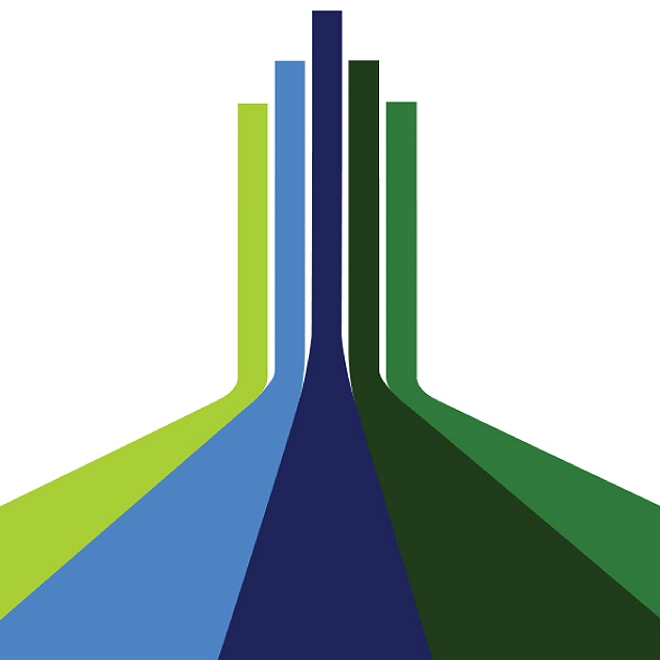Collaborative advantage: Activating the power of many
As economic and societal forces continually reshape the business environment, we’re entering an age of profound discontinuity. Here we explore two meaningful opportunities to reframe your strategy for success in the next decade.
In recent years, the world has witnessed extraordinary and foundational shifts: increasingly vivid manifestations of climate change, as scientific theory has been steadily affirmed by newly lived reality; rising inequality, accompanied by a resurgence in populism and nationalism, and a trend toward increasingly autocratic leadership; increased polarization and a decline of trust across many societies; new and impactful civic movements challenging old injustices; millions of human lives lost, and almost all lives disrupted by a severe global pandemic; and the steady demise of the post–World War II world order, now tragically accelerating as the horrors of war return once again to Europe.
Today, as we hope that COVID-19 will soon transition to a manageable endemic status, many business leaders are preparing for a return to something resembling “business as usual.” But we should also prepare for continued seismic change ahead, as the world—and the business environment—moves through inevitable further surprises. We believe that over the next decade, business leaders will experience several major discontinuities—shifts that fundamentally undermine and sometimes reverse long-standing “truths” and orthodoxies that have held powerful sway and shaped our thinking, choices, and strategies for decades.
Some of these are already in plain sight. First, from the mid-1990s, a widespread belief took hold that the sole purpose and responsibility of a corporation was to maximize short-term shareholder value. This notion became almost unchallengeable, profoundly informing the priorities and behaviors of most businesses. Today, mounting evidence of the increasingly severe costs of economic and social externalities has dramatically undermined this conviction, and more and more business leaders are publicly embracing a far more balanced model of stakeholder capitalism that includes the needs and interests of customers, employees, suppliers, communities, and our shared natural environment. Even some of the institutions that, in the past, most relentlessly advocated for the primacy of shareholder value now instead exhort leaders to adopt an authentic environmental, social, and governance agenda as a central business driver.
Similarly, for several decades, economic globalization has been a powerful, continuous, and largely uncontested force that spread progress, growth, and prosperity, and generated remarkable, new opportunities for many businesses. A rapidly growing global middle class created new customers, while increasingly educated and skilled workforces provided wage-arbitrage opportunities. Widespread deregulation, the convergence of standards, and the reduction of trade barriers also contributed substantially to a relatively benign international business environment. Now, geopolitical turmoil, increased government intervention, the disruption of supply chains from various sources, and growing protectionist instincts in many parts of the world are putting significant stress on this very system, in which most of us have honed our leadership skills and business strategies.
These discontinuities will undoubtedly require leaders to innovate radically—in new ways and with new mindsets. Fortunately, continued advances in technology will provide significant, new opportunities and capabilities. In fact, developments over the next decade will likely astonish. Paradoxically, the inevitable end of Moore’s Law as it hits its physical limits is driving critical, new investments in new materials such as graphene, expected to displace silicon, while advances in chip specialization, design, and architecture are steadily securing significant performance gains. Quantum computing, biological computing, and artificial neural networks are already emerging, and software continues to “eat the world.” Together, these technologies are reinventing even our thousand-year–old model of scientific discovery, with the exponential growth of digitized data and increasingly powerful learning algorithms enabling the automated discovery of correlation and causation. The possibilities and capabilities that new science and technology will generate over the next decade quite literally defy human imagination today.
Absolutely critically but perhaps less visibly, how we will innovate to create value and secure sustainable growth will also change very substantially. Two key “softer” shifts are underway today that will help redefine most business and organizational models in the years ahead. We believe most business leaders should commit to more deeply exploring and activating both.
From “the theory of the firm” to “the theory of the ecosystem”
Adam Smith first observed the key role of the division of labor in driving productivity and growth. Technological progress and the increased specialization of work resulted in the growing complexity of economies in meeting human and societal needs. Similarly, Ronald Coase, in his seminal 1937 essay, “The nature of the firm,” introduced microeconomics and the essential role of firms (primarily, the management of transaction and coordination costs).1 Both were theories that helped shape business as we know it today. But more than 80 years later, these traditional views of industry structure and the role of individual firms might be less useful in understanding and leading the value-creation systems that now reshape the economy.
Advances in digitization, datafication, connectivity, and specialization are steadily dissolving old structures and blurring old boundaries by enabling cross-industry and cross-firm collaboration and cocreation. Previously distinct industries are converging to form dynamic, human-centric ecosystems that address fundamental human and societal needs and wants in newly possible—and typically more effective, precise, accessible, and sustainable—ways.
Within these ecosystems, individual businesses—alongside government, academic and philanthropic actors, and consumers—collaborate, compete, and evolve together, with diminishing transaction and coordination challenges, and growing levels of interdependence and vital shared interests. Consider health and wellness: Physical and mental well-being are fundamental human needs, and have been the focus of discovery, innovation, and huge investment for centuries. But for too many in the United States and around the world, health care is inaccessible, either demanding a disproportionate share of their income, or simply beyond their reach.
The COVID-19 pandemic has accelerated the emergence of the new ecosystem that will transform this critical part of our societies and economies. Telemedicine usage soared, while tech and data companies rapidly developed and activated new track-and-trace systems. Pharma and biotech companies forged new collaborations, while blending and integrating vaccine manufacture and distribution capabilities. Governments, foundations, civic institution, public health agencies, pharmacies, and citizens funded, mobilized, and staffed mass vaccination programs. Media companies raised awareness and information.
Globally, around 12 billion vaccine doses have been administered from a standing start in 18 months, with many millions being injected every day.2 There’s no denying the appalling inequity in the timing of the rollout process, and that mistakes have been made and lessons learned. But the sheer scale, speed, and effectiveness of this massively complex undertaking have provided testament to the growing capabilities and power of multiactor collaboration, which will only grow and strengthen over time.
As a result, highly autonomous and fully vertically integrated organizations could be fading into history. Over the coming decade, the concept of a “self-contained firm” as a useful unit of value creation likely will decline even further.
While every business will continue to need its own strategy and vision to inform its own choices and priorities, these increasingly need to be anchored to the ecosystems within which the business operates. By focusing on collective strategies, we can more effectively integrate our capabilities in alliances for mutual benefit. This will not be simple. Strategy in a fast-changing world is already hard enough; collaborating with multiple entities to create shared ecosystem–wide strategies might feel a little like learning to play three-dimensional chess. New strategic tools and methods will be required, and new relationship norms must evolve.
The rise of networked power
Greatly amplified capabilities for connection and collaboration are not only transforming our economy through the growth of ecosystems but also greatly strengthening networked models of power. This matters profoundly. Power—who has it, how they get and use it, the rules they set with it, how they treat those who don’t have it, and the checks and balances they face if they abuse it—has always critically defined our societies, economies, and lives. Throughout history, the default modality of power has been consistently hierarchical and centralized, and operated primarily through command-and-control systems. The powerful institutions that have ordered our societies have been built primarily upon these defaults.
Yet very different power modalities have also helped shape human life—and frequently driven change. Networked, decentralized, autonomous, and collaborative models of power have frequently emerged as strong but temporary forces, often to tackle the abuse of traditional power and drive change and reform. Movements such as #MeToo and Black Lives Matter in the United States have triggered foundational societal changes that have impacted the behaviors and priorities of many major businesses. Greta Thunberg, lacking any formal authority or even organization, has catalyzed millions of youth activists in response to climate change.3
The default toward traditional hierarchical power models is simple to explain: They’re effective in getting things done and are stable and enduring. But they also tend to lack speed, flexibility, agility, responsiveness, and adaptability—all important qualities in times of significant change. This explains why, over the last few decades, most large organizations have launched initiatives aimed at decentralizing, delayering, empowering, or dissolving silos. The sheer strength of the default power systems explains why these efforts have often resulted in new layers, different silos, and recentralizing systems. But over the coming decade, the conditions are in place for the defaults to be reset, at societal, economic, and organizational levels.
Twenty-five years ago, many expected that the internet would catalyze massive decentralization and shift power toward networks and away from formal institutions. Some of the more utopian aspirations of the 1990s have certainly not been realized—and the pace of change has, perhaps, been slower than some expected. But there should be no mistaking the significant impact of the internet on shifting power and influence. Platforms such as eBay, Etsy, and Shopify have enabled new levels of distributed economic activity, with tens of millions of active participants. Open-source intelligence tools and platforms are becoming stronger and, along with a variety of citizen-led investigative organizations, are playing a major role today in tackling disinformation.4
Power is already shifting dramatically, but even greater change lies ahead. Trust in many old, centralized institutions is declining rapidly, eroding their authority and gatekeeping roles. Exponentially growing volumes of digitized data are becoming more openly available to more people. Gen Z, the first generation of digital natives, has reached adulthood with deep personal convictions regarding the need for social and environmental change. Web 3.0 and crypto networks are laying the foundations and establishing the capabilities for a decentralized digital economy.
The macro challenges and opportunities that lie ahead of us all demand multidimensional, multiactor collaborations that defy centralized coordination and control. Business (and other) leaders can, of course, choose to resist the rise of networked power models, but the costs, in terms of slow innovation and weaker collaboration, could prove to be high.
Bold action will be required from business leaders as we endeavor to forge a shared future that’s productive and sustainable, meritocratic and equitable, profitable and purposeful, logical and human-centric, and competitive but also deeply collaborative. Those who activate and amplify their agency by adopting new mindsets and innovating new tools and approaches to unleash the growing power of ecosystems, while blending hierarchical with networked power, will have disproportionate impact and will better secure their own sustained growth.
For more insights, visit www.deloitte.com/us/ageofdiscontinuity
About Deloitte
Deloitte refers to one or more of Deloitte Touche Tohmatsu Limited, a UK private company limited by guarantee (“DTTL”), its network of member firms, and their related entities. DTTL and each of its member firms are legally separate and independent entities. DTTL (also referred to as “Deloitte Global”) does not provide services to clients. In the United States, Deloitte refers to one or more of the US member firms of DTTL, their related entities that operate using the “Deloitte” name in the United States and their respective affiliates. Certain services may not be available to attest clients under the rules and regulations of public accounting.



